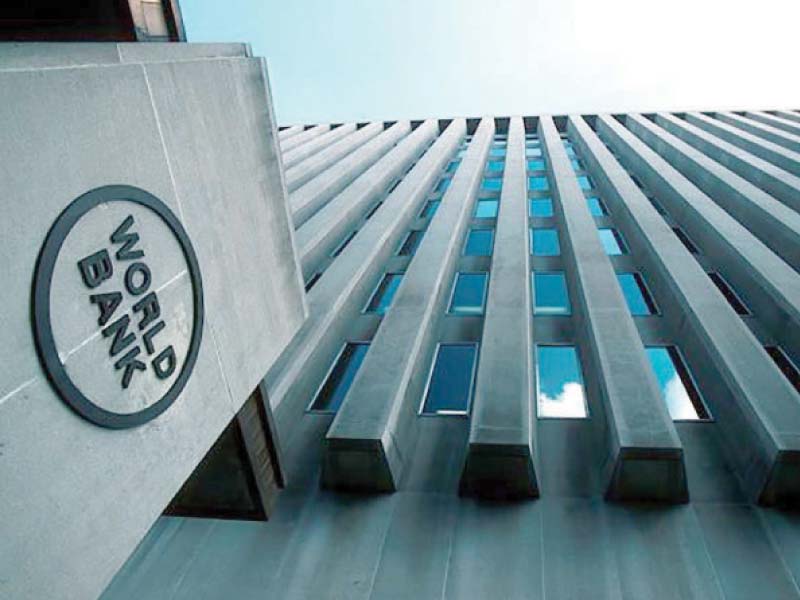
World Bank forecasts 0.5% growth rate
Report says pandemic compounded Pakistan’s economic woes
ISLAMABAD:
The World Bank sees an “anaemic” economic outlook of Pakistan, with growth rate of just 0.5% in the current fiscal year.
The half-a-percentage economic growth rate is far below the official target of 2.1% that the PTI government had set for its third year in power.
As per the bank’s forecast, Pakistan’s economic outlook remains fragile for at least two years, as the outbreak of the coronavirus respiratory disease compounded the country’s miseries.
The Washington-based lender on Thursday released its biannual flagship report -- the South Asia Economic Focus -- forecasting increase in current account deficit, budget deficit and public debt in current fiscal year 2020-21.
“The news is not good and the outlook is dire for South Asia,” World Bank Chief Economist for South Asia region Hans Timmer said in his opening remarks given through audio conference.
“The GDP tells only part of the story as the informal sector is hit more than its proportion,” he added.
While domestic economic activity is expected to recover, as lockdown measures are lifted, with a gradual decline in active Covid-19 cases, Pakistan’s near-term economic prospects are subdued, the report said.
According to the World Bank, the economic growth in Pakistan is projected to remain below potential, at 0.5% for FY-21, compared to over 4% annual average in three years to fiscal year 2018-19.
This projection, which is highly uncertain, is predicated on the absence of significant infection flare-ups or subsequent waves that would require further widespread lockdowns.
“Given anaemic growth projections in the near term, poverty is expected to worsen,” the report noted.
Vulnerable households rely heavily on jobs in the services sector, and the projected weak services growth is likely to be insufficient to reverse the higher poverty rates precipitated by the pandemic, it added.
The bank observed that Pakistan’s economy had been severely affected by measures taken to contain the pandemic.
“Economic activity contracted and poverty is expected to have risen in FY2019-20, as monetary and fiscal policy tightening, earlier in the year, was followed by lockdown,” the report said.
To a question by The Express Tribune about the poverty level, Timmer said for technical reasons the bank does not publish poverty figures for Pakistan but “increase in poverty is high in Pakistan like other countries”.
He said there was a 33% increase in poverty in India and the situation in Pakistan was not different.
The economic contraction is likely to have a significant impact on poverty.
“With government estimates of pandemic job losses at approximately 14 million, poverty is expected to increase for the first time in two decades,” the bank said.
The pandemic is also expected to exacerbate Pakistan’s human capital challenges, it added.
Growth is expected to gradually recover but remain muted, given heightened uncertainty and the resumption of demand compression measures.
A possible resurgence of the infection, widespread crop damage due to locusts and heavy monsoon rains pose major risks to the outlook.
A significant uncertainty over the spread of the pandemic and availability of a vaccine, demand compression measures to curb imbalances, along with unfavourable external conditions, all weigh on the outlook of Pakistan.
The economic growth is projected to remain below potential, averaging 1.3% during next two years, the report said.
The current account deficit is expected to widen to an average of 1.5% of GDP over fiscal year 2020-21 and 2021-22, with imports and exports gradually picking up as domestic demand and global conditions improve, it added.
The fiscal deficit is projected to surge to 8.2% of the GDP in this fiscal, as the expenditures will remain substantial due to sizeable interest payments, a rising salary and pension bill, and absorption of energy SOE guaranteed debt by the government, WB report stated.
The public debt would remain high in new two years, projecting it at 93.5% of the GDP in this fiscal year, which is set to slightly increase in next fiscal year too.
The external financing risks could be compounded by difficulties in rolling-over bilateral debt from non-traditional donors and tighter international financing conditions.
Hans said that in case financial crisis worsened, Pakistan’s GDP could take additional hit of 5% per year for the next five years.
Unlike Pakistan’s estimate of only 0.4% negative growth in the last fiscal year, the WB report still showed 1.5% contraction in the last fiscal year.
It said that 1.5% contraction reflected the effects of “Covid-19 containment measures that followed monetary and fiscal tightening prior to the outbreak”.
The WB said that despite weak activity, consumer price inflation rose from an average of 6.8% in fiscal year 2019 due to surging food inflation, hikes in administered energy prices, and a weaker rupee, which depreciated 13.8% against the US dollar in last fiscal year.
The international money lender maintained that private consumption would fall precipitously in Nepal, Pakistan, Sri Lanka and Bangladesh, where remittances are a large share of income.
In case of Pakistan, the remittances may plunge by 8.8% in 2020 and if the international crisis worsens, there will be 11.1% decline in remittances.
This would also add to poverty since remittances are well targeted in terms of reaching poor households, it added.
Overall, the WB forecasts a sharper than expected economic slump across the region, with regional growth expected to contract by 7.7% in 2020, after topping 6% annually in the past five years.
In previous recessions, falling investment and exports led the downturn. This time is different, as private consumption will decline by more than 10%, further spiking poverty rates.
“The collapse of South Asian economies during Covid-19 has been more brutal than anticipated, worst of all for small businesses and informal workers who suffer sudden job losses and vanishing wages,” World Bank Vice President for South Asia Region Hartwig Schafe said.















COMMENTS
Comments are moderated and generally will be posted if they are on-topic and not abusive.
For more information, please see our Comments FAQ